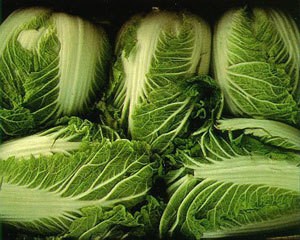
This page contains the following solutions.

Here are the questions asked by community members. Read on to see the answers provided by the ThriftyFun community.
Do Chinese cabbages grow well in volcanic soil and tropical climates, in areas around the equator? I know they're a cool climate produce, but there should be a way.
I live in a tropical client and we grow Chinese cabbage here. The only thing you need to worry about is the slugs eating the leaves of the plant.
I would shade the plant with a light fabric during the hottest part of the day. Mulch it so it retains the water
I woke up this morning to find that my seedlings were eaten by a certain bug. What should I do, even though I did not see any trail of snails.
By Dee T from Wanganui, New Zealand
I have had the same problem with some of my fall greens--kale and mustard specifically, but have had good success from two products: a Safer brand spray and a solution of water and Neem Oil. I tried each on separate plants, and both seemed to slow down or stop the creative lacework some little feller was doing on the leaves.
I would like to know how to grow Pak Choi successfully.
By brian wilkinson from Great Wakering, Essex
Bok choi seeds
Organic compost
Step 1 Select a place in the garden to grow bok choi. The area should be sunny, but sheltered from harsh elements. About two weeks before planting, enrich the soil with organic compost.
Step 2 Decide on a variety of Chinese cabbage and purchase the seeds. This is a matter of personal taste. Orient Express, for example, has small, round heads. Dwarf and Extra Dwarf Bok Choi are very small and good for gardens with limited space. Red Choi is beautifully colored.
Step 3 Plant the bok choi seeds directly in garden and cover them with 1/4" of fine soil. If the seedlings emerge too close together thin them so that they are about 8-10 inches apart.
Step 4 Water bok choi regularly. They have short roots and need water more frequently than other plants.
Step 5 Harvest bok choi by picking the outer leaves as needed. Otherwise, the whole plant can be harvested when it reaches 12-18" tall.
Tips & Warnings
Start a second crop in late summer for a fall harvest. Bok Choi can be planted indoors and then transplanted outside. The small plants can withstand light freezing. Bok Choi will go to seed quickly in hot weather. It can also rot in warm, humid weather. Try to harvest it before summer progresses. Good luck.